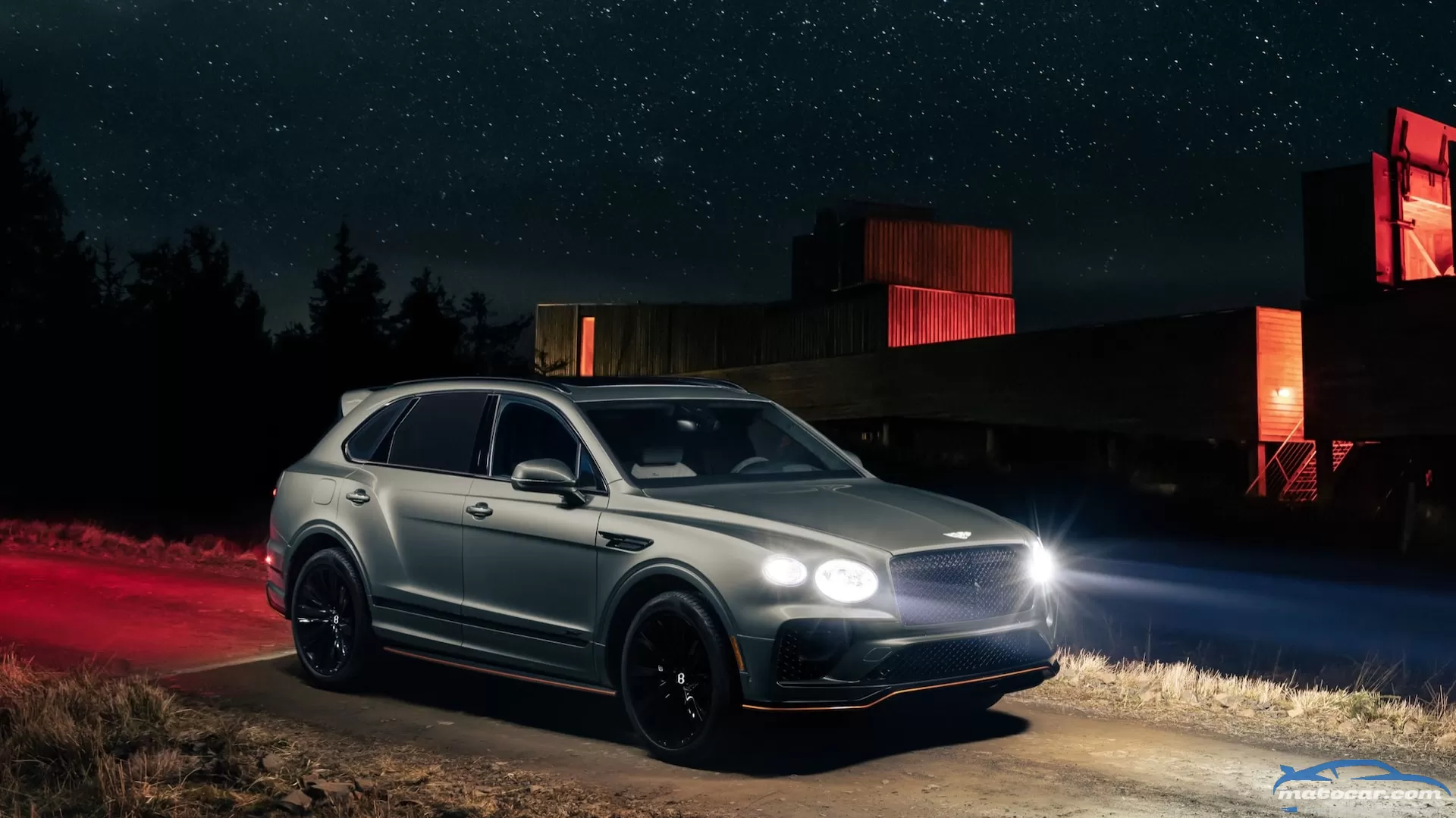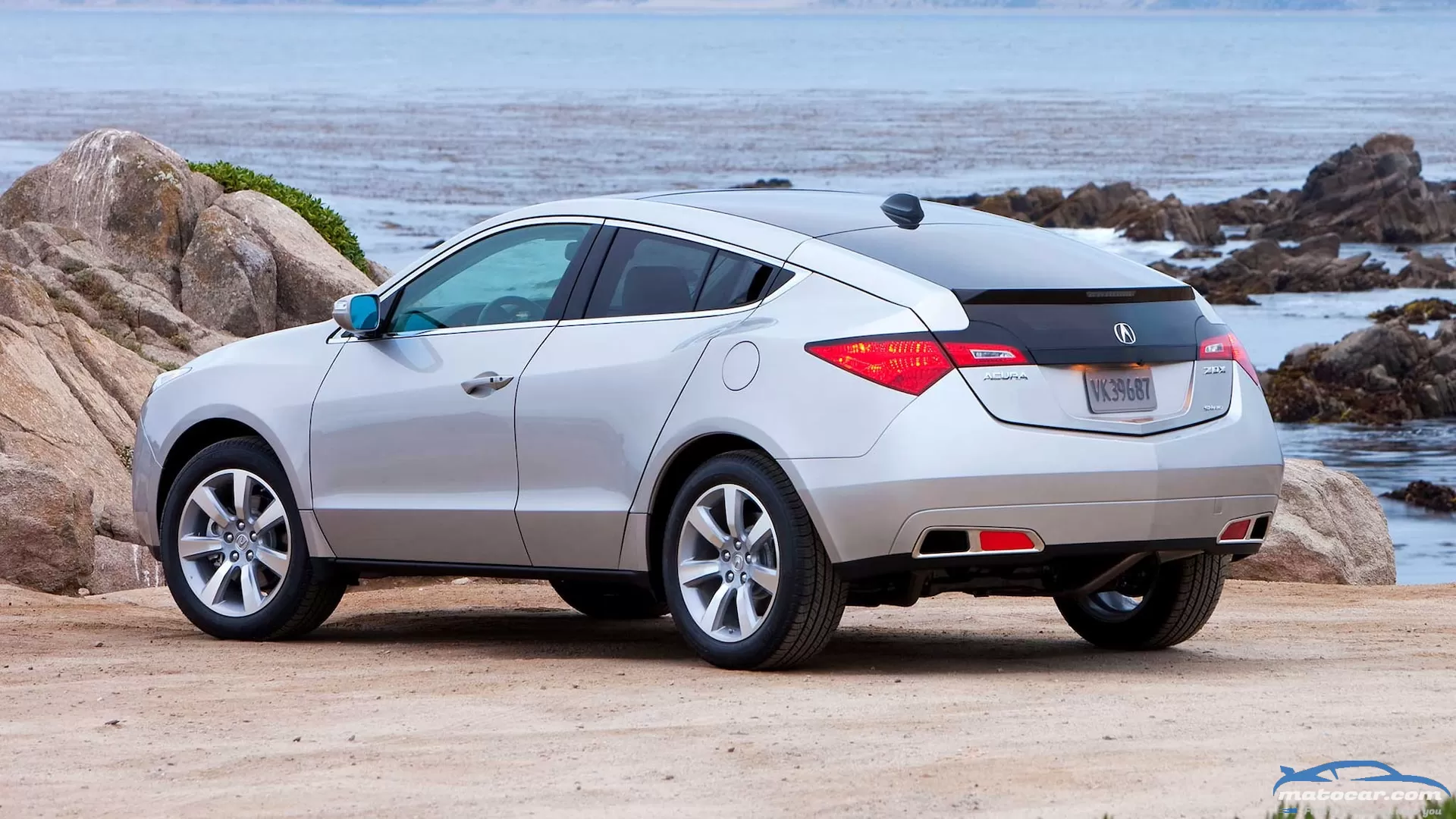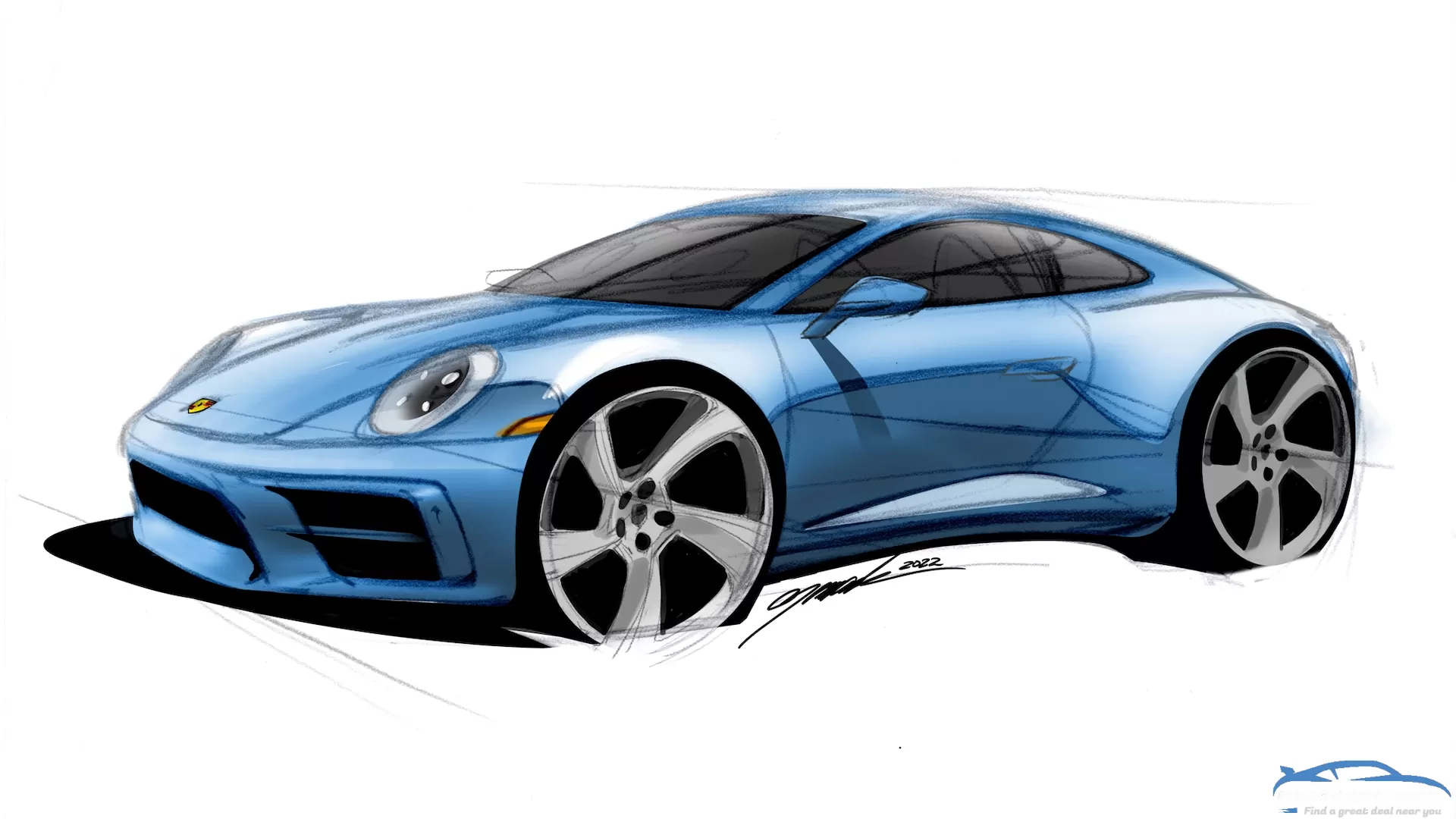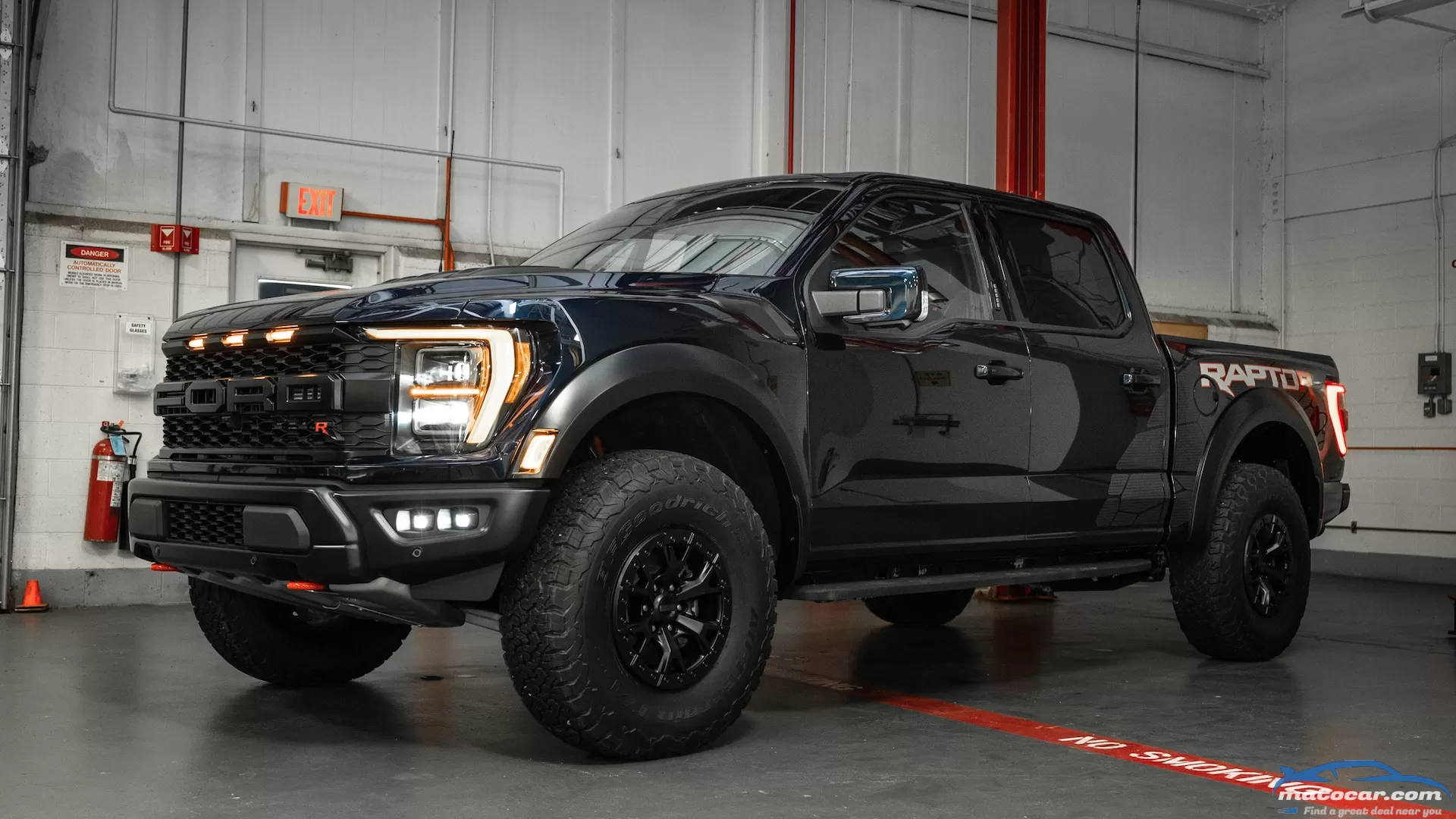If You Really Want a Space Bentley Bentayga It'll Cost You $71 Million

You've got a Tesla orbiting the sun, you've got Rivian-investing Jeff Bezos blasting into the upper atmosphere in an incongruous cowboy hat, and now there are Space Bentleys? Thankfully, not quite. No one's strapping a Bentayga super luxury SUV to a Delta Heavy anytime soon, given our back-of-napkin orbital payload cost calculations (using the common rough estimate of $10,000 to get a pound of anything into low Earth orbit). Instead, you've got a very earthbound Bentayga worked over by Mulliner that is inspired by space.
This one is destined for Florida's Space Coast, which puts its theme in a whole new light. The vehicle was commissioned by Bentley Orlando for a customer whose enthusiasm for space is equalled by pockets deep enough to have Mulliner work over a Bentayga Speed with their favorite frontier in mind. Cheap compared to spaceflight, surely, but not chump change by any standards.
Mulliner started off with a coat of Cypress green accented with Blackline Specification blacked-out brightwork and Orange Flame accents. Inside, custom sill plates provide a slice of the Solar System, while the rest of the interior is done up in Beluga and Porpoise—colors, thankfully, not exotic leather made out of highly intelligent cetaceans. Orange accents brighten up what is otherwise a dusky cabin.
This is just one of many commissions Mulliner has taken on lately. In 2022 alone, Mulliner has done 100 of these one-offs, and last year the division marked its 1,000th bespoke creation in its seven years of operation. With this sort of income, perhaps in a few years Mulliner will be able to do a custom New Glenn interior for some grossly wealthy Blue Origin customer willing to front $28 million just to experience microgravity for a few minutes.
You may also like
Acura has many great names in its arsenal, both used and unused. It recently brought back the iconic Integra nameplate, for example, and its history kicked off with the, um, legendary Legend. For the name of its upcoming electric SUV, its first-ever all-electric product, Acura is mining its past—but is digging up a weird fossil indeed: ZDX.What Is an Acura ZDX?The ZDX name is somewhat cool-sounding—at least amongst Acura's "_DX" SUV monikers, including the RDX and MDX—that was previously applied to a single-generation flop, a fastback-styled SUV introduced for 2010 that sold so poorly it lasted only through the 2013 model year.Now, depending on your point of view, the ZDX was either severely misunderstood and unfairly maligned for its beaky schnoz (Acura's grille de jour in the naughts), or it deserved to be killed with fire. Proving that not much in life is fair, the original ZDX largely mimicked the coupe-SUV format laid down by the BMW X6 that had arrived two years prior.Like that Bimmer, the Acura was based on a conventional SUV (an X5 in that case, and the Acura MDX family hauler here) but sported a lower, more hunched profile for some extra visual pizazz and less cargo space. It also came with Acura's torque-vectoring Super Handling All-Wheel Drive (SH-AWD), though only a middling V-6 engine. BMW's X6, which could be had with powerful V-8 engines, survived and thrived, even spawning a smaller X4 variant and similar competitors from Mercedes-Benz, Audi, and Infiniti. The ZDX did not.The ZDX Is BackAcura's ZDX is now being given a second lease on life, with the name officially destined for the brand's new electric SUV. In announcing the name, Acura referred to the upcoming EV SUV as a "performance" model, and added that it will incorporate styling from from the Precision EV concept. While the Precision EV concept connection doesn't specifically rule out a fastback roofline, we should point out that that show car has a fairly normal overall shape; it similarly eschews any funky detailing like the old ZDX's pointy grille, though it is festooned with LED lights.Even greater performance will be available via a promised Type S variant, which in Acura-speak is the name applied to the highest-performance version of a given model. There are TLX and MDX Type S versions available today, and the sold-out, now-discontinued NSX supercar capped its run with a Type S variant.We also know the ZDX will be a 2024 model, set to debut either sometime next year or early in '24 in full production guise. It will borrow GM's Ultium motor and battery technology at first—just like the mechanically related Honda Prologue due around the same time—with subsequent electric Acura's utilizing a new global e:Architecture that also will see collaboration with General Motors.Ironically, the original ZDX was fairly wild-looking, though one of its biggest letdowns was its lackluster powertrain. If Acura were to translate the old ZDX's visual drama into this decade while delivering satisfying electric punch and appropriate dynamic zest, we think the ZDX name could stick this time around.
Stellantis' love of "Easter eggs" compelled designers of the Ram 1500 TRX to include a graphic of a giant Tyrannosaurus Rex chasing a comparatively tiny velociraptor in the center console, with a more graphic image of a raptor being chomped by a T-Rex under the hood. Yes, that Hellcat-powered desert destroyer clearly caught Ford—which invented the factory Baja-racer category with its F-150 Raptor—flat-footed. But Ford is ready to more than even the score this fall with the introduction of the 2023 Ford F-150 Raptor R, powered by the aptly named "Predator" supercharged V-8 borrowed from the Shelby GT500 and significantly modified.Raptor R Power & TorqueLet's not bury the lede here: In an F-150 Raptor R, the 5.2-liter Predator V-8 makes 700 hp at 6,650 rpm (down from the GT500's 760 hp at 7,300 rpm) and 640 lb-ft at 4,250 rpm (up from 625 lb-ft at 5,000 rpm). This recalibration reflects the mission shift from track star to Baja 1000 trophy truck. They also allow this engine to haul 1,400 pounds of payload, lug an 8,700-pound trailer, and pass Ford's rigorous pickup-truck durability test cycles while spinning four gigantic 37-inch diameter tires (10 inches larger than a GT500 tire). And though that modest increase in peak torque may seem unimpressive, we're assured that torque increases by an average of 25 percent across the entire rev range. (Save your Googling—the TRX's pushrod engine makes 702 hp at 6,100 rpm and 650 lb-ft at 4,800 rpm, and its payload and tow ratings are 1,300 and 8,100 pounds.) How Fast Is the Raptor R?The same 120-mph governed top speed as the Raptor 37 will apply, but, weighing in at around 6,100 pounds, the weight-to-power ratio drops from the 3.5-liter Raptor 37's 13.3 lb/hp to 8.6, so we're confident the 0-60-mph time will drop from the 37's 5.6 seconds to perhaps 3.8 seconds or quicker. For those keeping score at home, the 6,760-pound (9.6 lb/hp) Ram TRX needs 4.1 seconds. You'll basically need four electric motors to go faster in a pickup truck. (The Rivian R1T: 8.6 lb/hp, 3.1 seconds to 60 mph).Dialing Up the Raptor R's TorqueNobody's bombing across a desert at 180 mph, so high-rpm power is deemphasized. Reducing the redline from 7,500 to 7,000 rpm allowed the supercharger pulley diameter to shrink, which means the Eaton TVS R2650 blower spools up more quickly at lower rpm (boosting low- and mid-range torque) without fear of over-revving at the top end. Breathing is also improved with a new conical air filter that improves airflow by 66 percent. On the exhaust side are new cast stainless-steel headers feeding a dual exhaust system that includes a true pass-through muffler where sound pulses from each bank can intermingle. These cast headers don't flow quite as freely as the GT500's tubular ones, but they can survive repeated Davis-dam, max-towing pulls. Gone is the V-6 Raptor's exhaust-pipe trombone loop, and the active noise valve feature is recalibrated for the R.The engine's lubrication circuit is significantly enhanced with a deeper, higher-capacity oil pan and a bar-plate oil-to-water cooling system that's integrated into the engine cooling circuit—a setup that works better for towing than the GT500's track-optimized oil-to-air cooler. There's also a new viscous aluminum crankshaft balancer. Drivetrain ReinforcementsYou can't simply yank out a 450-hp/510-lb-ft twin-turbo V-6, slap in a 700-hp/640-lb-ft V-8, and then send it off with a factory warranty. The 10-speed automatic's torque converter is fortified with a heavy-duty turbine damper and a beefy four-pinion output assembly. The shift programming is tuned to deliver the quickest shifts of any Ford 10-speed. The torque is then transmitted aft through a larger-diameter aluminum driveshaft, and forward to a new front axle featuring a strengthened spider-gear carrier and structurally reinforced front cover.Chassis ModsFord basically introduced the Raptor R's chassis last year, dubbed Raptor 37 to denote its class-largest tires. To that already reinforced platform's reinforced jounce bumper mounts, stronger front Fox shocks, and a new crossmember, trailer hitch, and winch mount for the underslung 37-inch spare, the R adds only unique calibration of the Fox Live Valve shocks and front springs that are stiffened by 5 percent to accommodate the roughly 80 additional pounds of the V-8 powertrain.Crazy 8s Outside, the Raptor R is distinguished by Code Orange front tow hooks and an orange R on the grille, a 1-inch-taller power dome in the hood (for looks as the engine requires no extra clearance), and unique graphics. The hood and rear flanks get appliqués that look like a cracked desert floor filled in with a zillion little 8s and one single "V" on the driver-side rear. Inside, there's a full black-out package with gloss black dash panels, carbon-fiber accents with a unique "triaxial" weave, and unique standard Recaro seat coverings. The black leather and Alcantara upholstery is accented with Code Orange stitching and the seatbacks are embroidered with a RAPTOR logo featuring an orange R at the end.How Soon and How Much?The order banks are open now for dealer deliveries starting in fall 2022 at a somewhat eye-watering all-inclusive price of $109,145. Buyers' only options will be the choice of eight colors (including an exclusive Avalanche Gray) and a panoramic sunroof likely to cost somewhere around $1,495 as it does on lesser F-150s. A similarly configured TRX rings in at around $102,000, so that's either a bold ask, it's factoring in considerable inflation, it aims to deprive dealers of their markup, or maybe it's Ford's subtler answer to Ram's T-Rex versus raptor Easter egg graphics. 2023 Ford F-150 Raptor R Specifications 2021 Ram 1500 TRX Specifications BASE PRICE $109,145 $72,020 VEHICLE LAYOUT Front-engine, 4WD, 5-pass, 4-door truck Front-engine, 4WD, 5-pass, 4-door truck ENGINE 5.2L/700-hp/640-lb-ft port-injected supercharged DOHC 32-valve V-8 6.2L/702-hp/650-lb-ft port-injected supercharged OHV 16-valve V-8 TRANSMISSION 10-speed automatic 8-speed automatic CURB WEIGHT (F/R DIST) 6,000 lb (57/43%, est) 6,760 lb (56/44%) WHEELBASE 145.4 in 145.1 in LENGTH x WIDTH x HEIGHT 232.6 x 86.6 x 80.7 in 232.6 x 87.0 x 80.6 in 0-60 MPH 3.8 sec (MT est) 4.1 sec EPA CITY/HWY/COMB FUEL ECON Not yet rated 10/14/12 mpg EPA RANGE 450 miles (est) 396 miles ON SALE Fall 2022 Now Show All




0 Comments